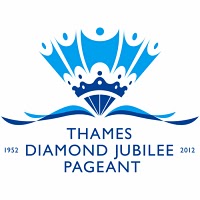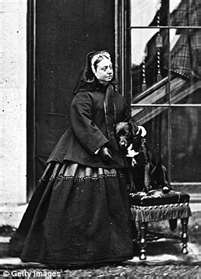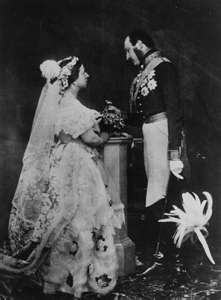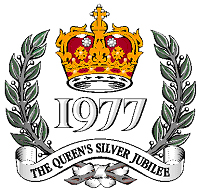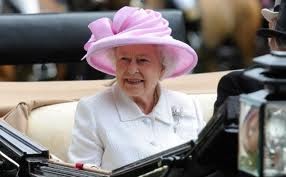Last year, when Kristine and Victoria OD’ed on the Queen’s Gallery in Buckingham Palace, we enjoyed the exhibition of
Victoria and Albert: Art and Love. This spring the kind of love celebrated was the Prince Regent’s fondness for art and acquisition. Certainly the two go hand in hand, but the future George IV carried his love for magnificent surroundings to an extreme. His extravagance made him unpopular with politicians and the people, but left us a lasting legacy in the Royal Collection and royal residences. For the RC website, click
here.
The exhibition devoted to the Regency was suitably opulent. In the center above is the Prince of Wales, portrayed in 1791 by artist John Russell (1745-1806). On each side are two of his siblings in portraits by Sir William Beechey (1754-1839) of the Duke of Cumberland and Princess Augusta. These two were exhibited at the Royal Academy in 1802 and by 1805 were hung in Kew Palace.
Here is one of a pair of candelabra by goldsmith Paul Storr (1771-1844); the child is Princess Sophia at age 8 by John Hoppner (1758-1810), exhibited at the RA in 1785; A Rough Dog was painted by royal favorite animal painter, George Stubbs (1724-1806).
The candelabrum of gilt bronze and blue enamel and the pedestal of gilded pine were parts of a set of eight supplied to the Prince about 1794 for the Great Drawing Room of Carlton House. The dealer was Dominique Daguerre, who provided many items made in both England and France.
The magnificent table above was chosen in 1826 for the Crimson Drawing Room in Windsor Castle, one of the last of George IV’s elaborate redecoration schemes, which previously included Carlton House, the Brighton Pavilion, and Buckingham House. The Sevres hard-paste porcelain vases were originally in the Brighton Pavilion and later moved to Carlton House. The Prince had an extensive collection of Sevres.
The top of the table is inlaid stones and marbles, a colorful and complicated inset design.
According the label, this pedestal clock was purchased by Francois Benois, the Regent’s pastry chef, on one of his trips to France to acquire art for the Prince. Of particular interest was the emblem of Louis XIV, the mask of Apollo; the Regent was an admirer or the French Sun King.
The painting above is Rembrandt van Rijn’s The Ship Builder and his Wife (Jan Rycksen and his wife Griet Jans), painted in 1633; at a price of 5,000 guineas, it was the most expensive painting the Prince Regent purchased.
One of a pair of Chinese bottle vases and stands, c. 1814, of porcelain with gilt bronze mounts by Benjamin Vulliamy and stands of marble and ebonized wood; These celadon porcelain vases stood in the Blue Velvet Room at Carlton House; Vulliamy was a clock-maker to George III but was increasingly employed at Carlton House to enhance porcelain objects with decorative gilt bronze mounts.
The center portrait in this grouping is Charles-Alexandre de Calonne, 1784, by Elisabeth-Louis Vigee-Lebrun (1755-1842); Calonne was French finance minister to Louis XVI; his reform suggestions to the king (a copy is held in his hand) might have prevented the French Revolution, but instead he was dismissed and fled to England in 1787; the canvas was purchased by the Prince before 1806.
One of a set of large armchairs, c. 1790. by Francois Herve, made for the Chinese Drawing Room at Carlton House, “perhaps made under the direction of Henry Holland and dealer-decorator Dominique Daguerre. The three men formed part of the highly cultivated Francophile entourage which surrounded the Prince of Wales in the later 1780′ and 1790’s during the early phase of construction and decoration at Carlton House.” (from the label)
The pier table, above, with the candelabra, vases and Chinese Mandarin on the low shelf, were acquired for the Chinese Drawing Room at Carlton House in 1792, the first of a number of Chinese-style rooms created for the Prince of Wales at his various homes, culminating 25 years later with the chinoserie at the Brighton Pavilion.
Since Carlton House was pulled down in 1826, the only pictures of its interior are paintings done in the house, particularly this collection of eight watercolours by Charles Wild (1781-1835). Fortunately, as we have seen in this exhibition, the furniture and decorative objects were moved to other remodeling and construction projects of George IV; his essential and extravagant tastes for exotic and sumptuous theatricality continued into his residences in Brighton, London and Windsor.
This commode is made of ebony, tulipwood, gilt bronze, marble, mirrored glass and a porcelain plaque. It was probably designed under the guidance of French dealer-decorator Daguerre and made by the leading Parisian cabinet maker Adam Weisweiler (1744-1820) in 1785.
In addition to paintings, furniture and decorative objects, the exhibition includes military items, a particular interest of the Prince of Wales. As heir to the throne, he was not allowed to participate directly in the armed forces, but he often designed uniforms, such as the elaborately frogged jacket above. And he collected guns, swords and other paraphernalia as well.
This pair of double barreled flintlock pistols was made by Nicolas-Noel Boutet and presented to the Prince Regent by Louis XVIII of France in 1814 after the first abdication of Napoleon.
Elsewhere in the Queen’s Gallery were exhibitions from the Royal Collection focusing on Mythology and Dutch Painting. Many of the objects shown were purchased by the Prince of Wales /George IV. The clock above was made by Pierre-Philippe Thomire about 1805 of gilt bronze, marble and blue enamel. From the label: “Apollo was believed by the Romans to be god of the sun. Each day was marked by his emergence from the sea and his journey across the sky in his golden quadriga — a chariot drawn by four horses abreast — a cycle illustrated vividly by the clock.”
Also in the Mythology exhibition was this painting of Pan and Syrinx, c. 1620-25, after Sir Peter Paul Rubens, showing a story from Ovid’s Metamorphoses about Pan’s pursuit of a wood nymph who was transformed into tall reeds as he caught her — reeds Pan used to make musical instrument — his pan pipes. The Prince Regent bought this painting in 1812.
In the Dutch Paintings exhibition, this painting by Aelbert Cuyp (1620-1691) “Cows in Pasture beside a River, before Ruins, possibly of the Abbey of Rijnsburg,” c. 1645, was acquired by the Prince Regent in 1814. From the label: “Cuyp often employed an unnaturally low viewpoint which forces every form to be silhouetted against the sky, creating a detached effect. In this imaginative view, cows dominate the foreground, with shadowy ruins in the far distance.”
The Queen’s Gallery in June, 2010
The Queen’s Gallery is open year around with shows drawn from the Royal Collection. during the months when the Queen and royal family are at Balmoral, the State Rooms of the Palace are open, as they are on a few other occasions during the year. See Kristine’s post on her visit to the palace 1/9/11. But you can go to the Quee
n’s Gallery any time you are in London; I cannot recommend their exhibitions enough. I have attended many times over the years, and I have never been disappointed. However there is DANGER!! The shop is too tempting to be believed. Click
here for a taste of what awaits you if you venture inside. Of course, it’s all available on line, but being there is even more toxic to the bank account. Nevertheless, it is wonderful!
Next on Travels with Victoria: the British Museum
